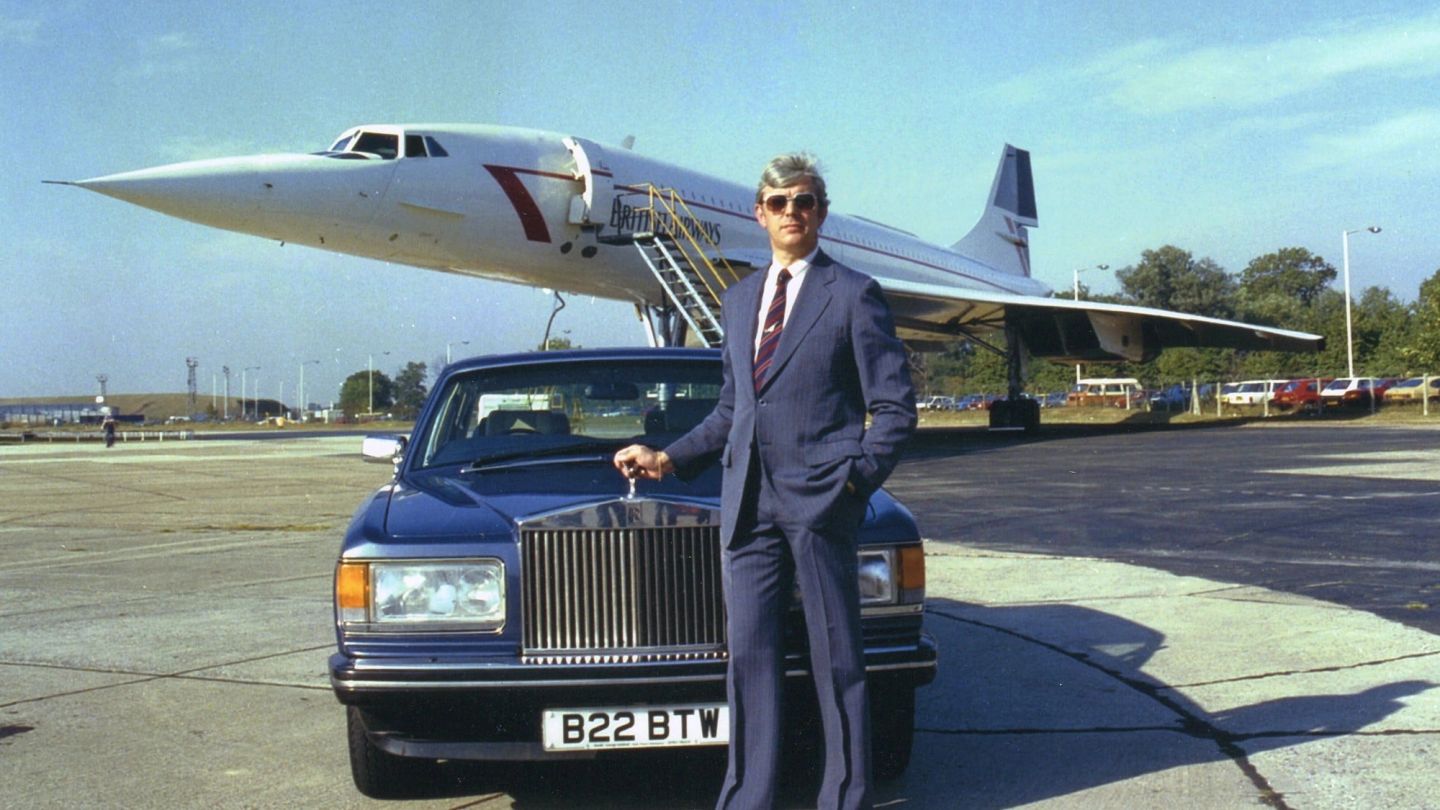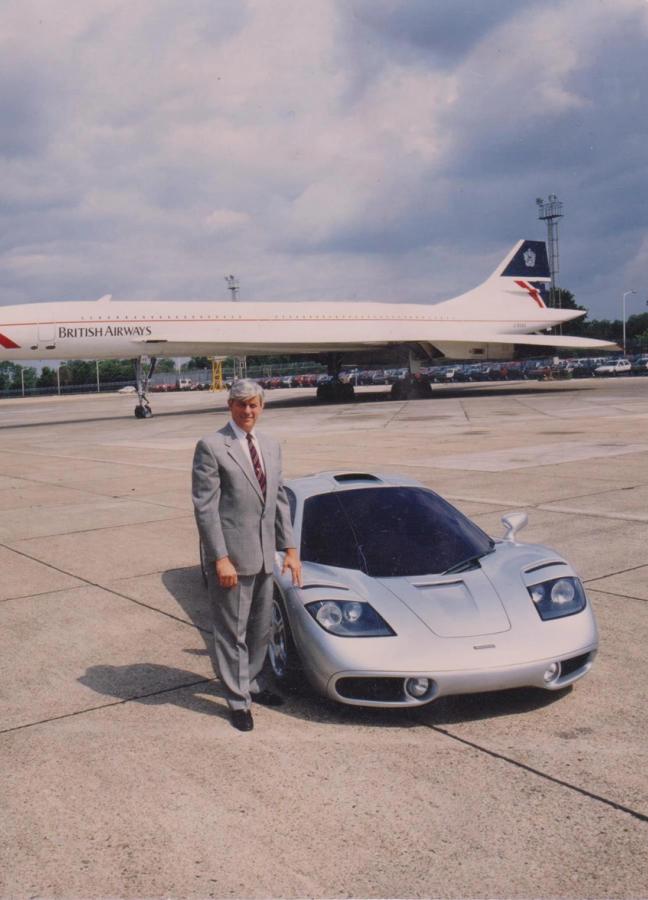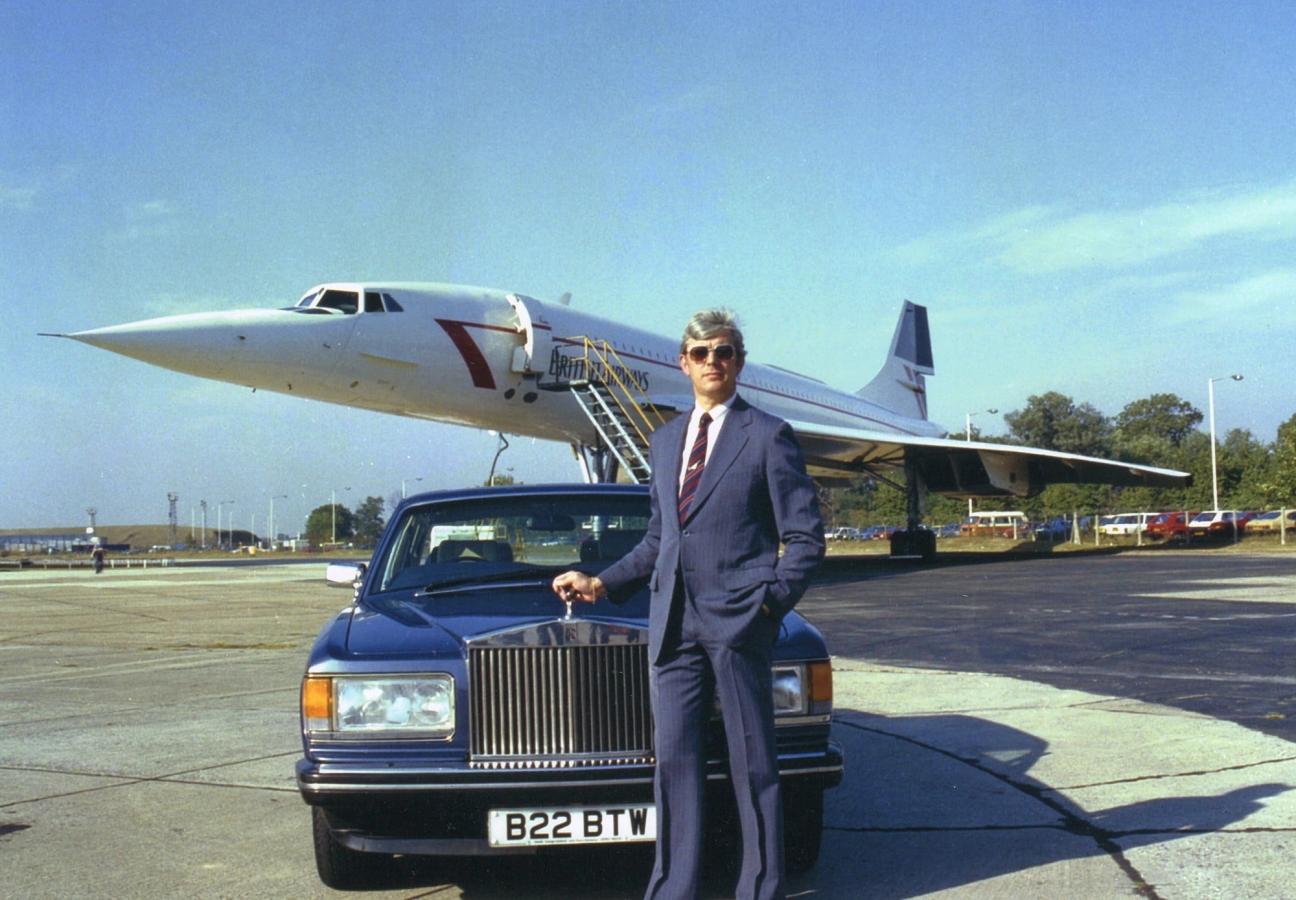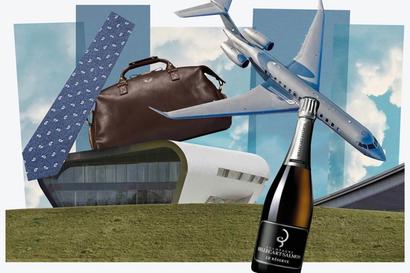

“I would always find a half bottle of Dom Perignon stashed under my seat…” — Meet Concorde’s million mile man
Fred Finn flew 2.5 million miles on the supersonic jet — and explains the unique atmosphere onboard this historical anomaly
- Words: Rory FH Smith
“It was a sports car, it wasn’t a Rolls Royce,” says Fred Finn wistfully as he provides a second-by-second account of taking off in Concorde, the iconic supersonic airliner. “It was bumpy — you sure felt it — and with the full reheats on, Concorde was like a fighter,” he says with a smile. Of course, for Frederick W Finn, describing every surge, smell and sound of a Concorde at full chat is second nature. At the age of 81, he holds the Guinness World Record for the most supersonic passenger flights. Of the 15 million miles Finn clocked up in the sky, 2.5 million of those were recorded on the 718 Concorde flights he took between 1976 and 2003, in ‘his’ seat 9A. Why that particular seat? Because “that’s where they started the refreshment service from,” of course. Fast becoming a regular on the supersonic service, Finn would always find a complimentary half bottle of Dom Perignon stashed under his seat to welcome him back to his 11-mile high, 1,350 mph home. “I became an ad hoc part of the Concorde family and still I am very much so to this day,” he says.

Mean Machines: Fred Finn with a Mclaren F1 in front of a Concorde jet
Still travelling, albeit slower than the speed of sound thanks to Concorde’s involuntary redundancy in 2003, Finn’s tales from his life at Mach 2 are worthy of a film. “Johnny Cash was a big mate of mine. I used to fly out of Nashville with him…I arranged a helicopter for Phill Collins to get him to the Live Aid concert…I flew with Paul McCartney many times. He was a nice guy… I met President Gorbechev several times — I even stayed in his Dacha in Ukraine…and obviously, I know Richard Branson because I helped him start his airline.”
The list goes on, as do the obscure tales of how Finn came across his high-ranking friends at 60,000 feet. But Finn isn’t particularly fussed about the famous names. He’d much rather relay the details of the times he spent in the cockpit, alongside the handful of Concorde captains, staring out of the heat-resistant visor and over the trademark droop nose on approach to JFK. It’s only when pushed does he recount the names and details of his supersonic encounters. From heading out for ribs with Johnny Cash in New York and arguing the toss with Sir David Frost about who flew on Concorde more frequently, to advising Richard Branson on his new airline strategy and parties with Ayrton Senna, there weren’t many people in the public eye that Finn didn’t meet over a glass of Dom Perignon at Mach 2. “You have to understand on Concorde, it’s not like any other aeroplane where there’s economy, business and first. Everyone on Concorde knew they’d earned the right to be there, some way or another, so everyone was equal. I mean if you’d tried to get in the office of the people I met, it would have been almost impossible.”
"I know Richard Branson because I helped him start his airline..."
Despite Concorde making its first commercial flight 45 years ago, Finn’s obsession with aviation dates back to his childhood in the early 1950s. “I’m from Canterbury originally and I used to go down to Lympne, the WWII aerodrome and I bugged everybody until I could get a ride. I remember I convinced a guy to take me up in a Tiger Moth when I was 13, which was my first flight, and at 1000 feet, he turned it upside down. I was held in by pieces of linen but it excited me,” he says. 1958 was the year Finn took his first commercial flight, heading West to the USA. “It took four stops and 19 hours in 1958 but, 38 years later, I did that reverse journey from New York to London in under three hours on board Concorde.”
Despite dreaming of becoming a professional cricketer as a child, Finn discovered early on that he had a knack for sales and spent much of his career setting up licensing agreements all over the world. After cutting his teeth and learning international law and marketing on board an oil tanker in the Americas while working for Esso, Finn got a taste for travel. A stint driving around the USA as a travelling sales representative followed, afterwhich Finn looked even further afield and started selling to far-flung corners of the world. “I went to Tehran, Singapore, Buenos Aries, South Africa, Kenya, Japan. Eventually, I’d been everywhere and I started to get noticed for my travel,” he says.

A Concorde lifts off from Heathrow before its final ever flight, October 2003
Living in America in the mid-1970s, Finn had only heard whispers of the Anglo-French effort to develop supersonic airliner. The remarkable engineering collaboration would eventually be named Concorde, a word familiar to both nations and one that reflected the engineering agreement between the two countries. “I’d heard of it but I’d never really looked into it…but because of my travels, I’d flown for four years across the Atlantic every weekend, I was well known to British Airways.” Living in Nashville at the time, Finn regularly flew out of Washington DC and soon found himself being invited to take the first Concorde flight out of Washington to London. “I didn’t really know what to expect but it was an altogether different experience. In the lounge, I could see this long shape outside and when I stepped through the door, it struck me how long and narrow it was…I was full of excitement,” recalls Finn on that day in 1976.
"Each takeoff was a phenomenal experience — we had to warn the passengers in advance of what to expect..."
For its passengers, the Concorde experience began at the airport with its dedicated check-in desk and lounge, where an elite group of no more than 100 passengers would get to know each other over champagne before making a bumpy taxi out onto the runway. Once settled in their seats and cleared for takeoff, passengers were treated to the full force of the four Rolls-Royce Olympus engines as the aircraft made its way down the runway, reaching a takeoff speed of 250mph. “[Concorde] always used full power with reheat for takeoff,” explained former British Airways Concorde captain John Tye in an interview with CNN.
“Each takeoff was a phenomenal experience, the performance was such that we had to warn the passengers in advance of what to expect. The roar of the Rolls-Royce Olympus engines, combined with being pushed back into your seat, was like no other civilian aeroplane,” he added. Once in the air, Concorde would reach its top speed of twice the speed of sound – Mach 2 (1,350 mph) – usually somewhere over the Atlantic, to prevent its controversial sonic boom from disrupting life on earth 11 miles below. At full speed, the supersonic craft would fly five miles higher and 800 mph faster than the standard, subsonic Boeing 747s that steadily made their way across the Atlantic.
Finn’s Delta Air Lines ‘Flying Colonel’ loyalty card
After Finn’s first blind date with Concorde in 1976, the travel veteran went on to clock up more than 2.5 million miles on 718 flights in Concorde’s 27 years of service, which culminated in its last flight from New York to London on October 24th, 2003. For once, Finn wasn’t onboard, as he was commentating on Sky News as a raft of teary-eyed celebrities including Joan Collins, Darcey Bussell, Rupert Murdoch, Jeremy Clarkson and Piers Morgan set off one last time from JFK. Of those famous faces, Clarkson and Morgan decided to mark the occasion with a spat on-board that would roll on for a decade.
Petty fights aside, the final flight was a regretful occasion for many. A significant step backwards for civil aviation and technological prowess, as the hangar door closed for good on the world’s supersonic commuter age. Some say the catastrophic Concorde crash outside Paris in 2000 marked the end for the airliner while others blame the New York terror attacks the following year for slashing the demand for overseas business travel. Regardless, the end of the runway had arrived for the delta-winged darling of the skies, relegating all 20 aircraft — most still fully operational — to museums and hangers around the world.

But for its most frequent passenger, it marked the end of much more. “It’s easy to say it’s the speed I miss but it’s actually the connectivity,” admits Finn. “Concorde made the world a much smaller place.” Now busy compiling his remarkable experiences in a book about his life, Finn lives in Surrey, working as a consultant for travel companies. After spending a significant portion of his life in the sky, Finn became close to the handful of crew and pilots that flew Concorde. In the three decades that the supersonic liner took to the skies, fewer pilots have flown the Concorde than have ever been in space. From being called upon by crew to help settle anxious passengers, to drinks with the pilots after hours and even playing for the Concorde cricket team, Finn made lifelong friends at Mach 2.
“I miss all my friends on Concorde. I’d walk on and I’d know from the cabin crew who was flying it and I’d know from the flight deck who was in the cabin crew because Concorde was a very friendly aircraft,” he says, wistfully.
"It's easy to say it's the speed I miss but it's actually the connectivity..."
Now 45 years on from the moment the engineering masterpiece carried its first passengers, nothing in the aviation industry even comes close. In February 2020, the news lept at a ‘record’ transatlantic crossing made by a British Airways Boeing 747 that reached speeds of 825 mph as it rode a jet stream accelerated by Storm Ciara. The flight, while impressive for a 747, was woeful in comparison to the fastest crossing recorded by Concorde 24 years earlier, which trumped the time by more than two hours. Never had there been a clearer example of how civilisation had taken a mighty technological step backwards. Now, with a handful of companies planning to develop new supersonic challengers, time will tell if the Mach 2 era will dawn again for the everyday passenger. Until then, Finn can rest assured that his Guinness World Record will remain in his hands for a while longer yet.


